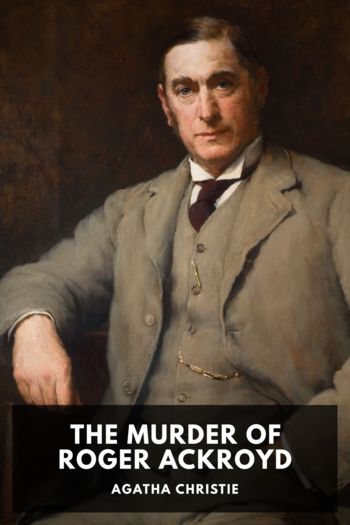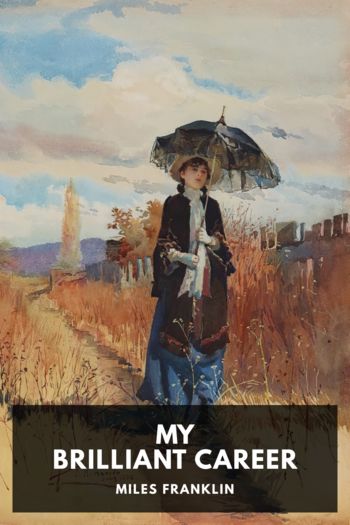The Clerkenwell Tales Peter Ackroyd (nice books to read TXT) 📖

- Author: Peter Ackroyd
Book online «The Clerkenwell Tales Peter Ackroyd (nice books to read TXT) 📖». Author Peter Ackroyd
Return to text.
13. Historians harbour conflicting opinions about the persistence of the secret group known as Dominus. In the events related here it became clear that Dominus was dominated by one faction, serving the interests of Henry Bolingbroke and using the predestined men to achieve its purpose; but it is not at all clear that it maintained its partisan stance in the subsequent affairs of the nation. Some believe it to have been dissolved at the time of the Civil War in the seventeenth century, when it could no longer manage the scale of religious conflict; but others trace its existence in the Gordon Riots of 1780 and in the Oxford Movement of the 1830s. Some historians believe that Dominus persists to this day, and they cite the events in Northern Ireland as evidence of its malign conspiracy.
Return to text.
14. Haukyn’s Field is now a grass mound, to be seen a few yards south of Whitechapel High Street. It is not much visited by night.
Return to text.
15. It has been argued that the festival of Midsummer Eve is of ancient origin, and that its drinking and its violent games had once been part of certain religious ceremonies which had never lost their power or efficacy over the populace; the bonfires and the sports represented some atavistic recollection of the time before Christian worship. The feast of Midsummer Eve was discontinued in the period of the Reformation, in the mid-sixteenth century; nevertheless, even now, public houses customarily display garlands or baskets of flowers by their doors.
Return to text.
16. The place where he died can still be seen in what remains of the church of St. Bartholomew.
Return to text.
17. At the corner of Wood Street and Cheapside, a tree still grows out of the soil and rubble of the city. It is a plane tree, rather than the oak, but it also prospers in the London air.
Return to text.
18. The course of this part of the Fleet river can still be traced in the curve and flow of the London streets in that neighbourhood. Thomas Gunter was murdered by William Exmewe at the turning of the river where Pancras Road now flows into Pancras Way.
Return to text.
19. The same fog is mentioned by Strabo, in his account of London in the first century; he reported that the sun could only be seen for three or four hours each day. It was also invoked by Herodian two centuries later, when he described “a thick mist rising from the marshes.” On certain nights, in Westminster, that fog still returns in gusts of darkness.
Return to text.
20. The role of the nun has been much studied in histories of late fourteenth- and early fifteenth-century England. She has been compared to other “turbulent women” such as Elizabeth Barton, the sixteenth-century “Mad Nun of Kent,” and the eighteenth-century duchess of Newcastle. Others have seen her as an integral part of the Church in schism, representing what has been called the “matriarchal” tendency. It is clear, however, that she maintained the supremacy of the universal Church opposed to national sovereignties. Whether she took part in the plots of Dominus, to sow discontent and thereby to discredit the rule of Richard II, remains an open question. Her subsequent control of the organisation continued until her death in 1427 – by which time she had become prioress of the House of Mary in Clerkenwell. During the period of her leadership Dominus became a recognisable group, albeit a clandestine one.
Return to text.
21. Only in recent years has the connection between Dominus and the predestined men been discovered. For more than five centuries the activities of the predestined men were described by historians as a brief, if unique, episode in the anti-clerical activity of the period. In 1927, however, a letter from William Exmewe was found within a bundle of ecclesiastical documents in the library of Louvain Cathedral. It had been written in Avignon, but apparently had never reached its destination. Its recipient was addressed simply as “Dear father in Christ.” In this letter, Exmewe confesses to his association with the predestined men, and claims that “Dominus me festinavit” – which might mean either that Dominus [the organisation] or Dominus [the Lord] hastened me forward. But Exmewe then goes on to list those who were members of Dominus before the coronation of Henry Bolingbroke, as well as the names of the predestined men. Without the assistance of his letter, this narrative could not have been written.
Return to text.
Peter Ackroyd, 2003
A Note About the Author
Peter Ackroyd (CBE) is a master of the historical novel: The Last Testament of Oscar Wilde won the Somerset Maugham Award; Hawksmoor was awarded both the Whitbread Novel of the Year and the Guardian Fiction Prize; and Chatterton was shortlisted for the Booker Prize. His most recent historical novels are The Trial of Elizabeth Cree and Milton in America.
ALSO BY PETER ACKROYD
Fiction
The Great Fire of London
The Last Testament of Oscar Wilde
Hawksmoor
Chatterton
First Light
English Music
The House of Doctor Dee
Dan Leno and the Limehouse Golem
Milton in America
The Plato Papers
Nonfiction
Dressing Up: Transvestism and Drag: The History of an Obsession
London: The Biography
Albion: The Origins of the English Imagination
Biography
Ezra Pound and His World
T. S. Eliot
Dickens
Blake
The Life of Thomas More
Poetry
Ouch!
The Diversions of Purley and Other Poems
Criticism
Notes for a New Culture
The Collection: Journalism, Reviews, Essays, Short Stories, Lectures
edited by Thomas Wright
PUBLISHED BY NAN A. TALESE
AN IMPRINT OF DOUBLEDAY
a division of Random House, Inc.
1745 Broadway, New York, New York 10019
DOUBLEDAY is a trademark of Doubleday, a division of Random House, Inc.
This book is a work of fiction. Names, characters, businesses, organizations, places, events, and incidents either are the product of the author’s imagination or are used fictitiously. Any resemblance to actual persons, living or dead, events, or locales is entirely coincidental.
Library of Congress Cataloging-in-Publication Data
Ackroyd, Peter, 1949–
The Clerkenwell tales / Peter Ackroyd.—1st U.S. ed.
p. cm.
1. Great Britain—History—Richard II, 1377–1399—Fiction. 2. London (England)—History—To 1500—Fiction. 3. Christian pilgrims and pilgrimages—Fiction. 4. Prophecies—Fiction. 5. Nuns—Fiction.





Comments (0)